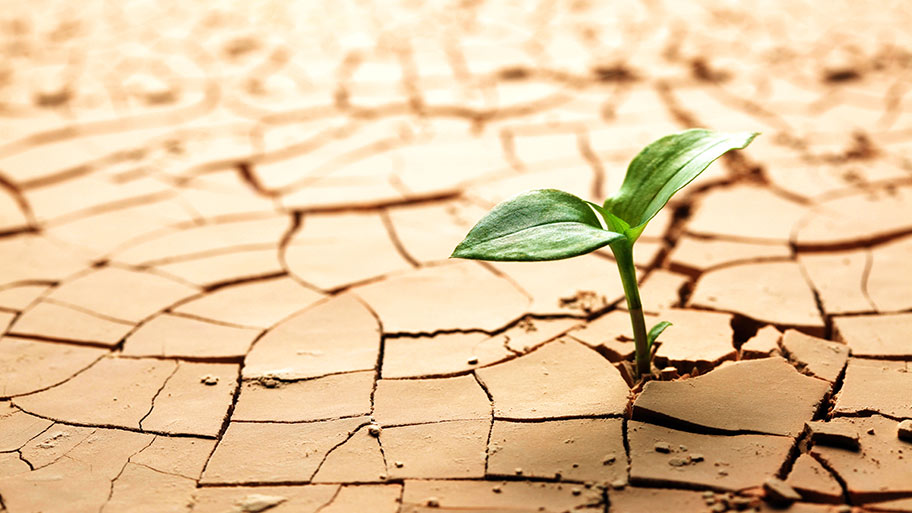
Dry spell: Covering worsening droughts
In the news
A months-long drought has hit the northeastern United States, and while it’s not as dire as the West Coast’s five-year dry spell, it has stressed farms, prompted water restrictions and threatened more wildfires. It stretches from Maine to Pennsylvania and has hit Massachusetts particularly hard, as well as New Hampshire, Maine and New York.
Back story
U.S. drought has worsened in recent decades, and is affecting much of the country. As of early August, drought is affecting 17.7 percent of the U.S., and more than 100 million people. According to the Environmental Protection Agency, large portions of the Southwest have experienced the most persistent droughts on record in the last decade. Globally, since the 1950s, regions like southern Europe and West Africa have also experienced longer and more intense droughts.
Adaptation angle
Projections see worsening drought ahead, requiring government, businesses and individuals to adjust water consumption, and to prepare for impacts of drought on food and water supplies, human health, energy production, transportation, migration and a slew of other policy areas.
The United Nations expects more drought in the coming decades not just in southern Europe and the Mediterranean, but also in central Europe, central North America, northeast Brazil, southern Africa, Mexico and Central America. In the U.S., Climate Central projects 36 states will see an increase in drought threat by 2050, with many states facing severe, widespread drought causing major economic and environmental impacts. By 2050, it says nine states — Colorado, Idaho, Montana, New Mexico, Texas, Michigan, Wisconsin, Minnesota, and Washington — are projected to face a greater summer drought threat than the most at-risk state, Texas, does today.
Questions to ask
- Is your community in a state or region that has experienced or is expected to see worsening drought? If so, what, if any, response plans are in place from policymakers?
- What state and local agencies have authority over water usage?
- Are water-use restrictions currently in place? Are they mandatory or voluntary? If mandatory, are they being enforced?
- What kind of water efficiencies might be possible in your area, such as shorter pipe networks?
- What kind of land-use policies, such as more compact communities, might improve drought resilience in your community?
- What drought-resistant lawns or landscaping techniques can residents use?
- What might be the infrastructure impact of drought in your area? Are soils shrinking, damaging pavements? Are buildings in your area experiencing drought-related foundation cracking? Is there damage to underground pipelines?
- What is your area’s primary water supply and what is the impact of drought? Are reservoir levels dropping or streams drying up? Is drinking water quality being affected?
- Could low river flows cause salt-water intrusion in your area? Or foster subsidence in soils as groundwater supplies are used up?
- What kind of public health considerations does drought bring to your community, whether with food preparation, sanitation, recreation or water quality?
- Is the balance of the water supply going to agriculture or populated areas? Should water resources be diverted from one to the other?
- For agricultural areas, what are the impacts of drought, ranging from slower plant growth to crop losses?
- Are agricultural firms or scientific organizations in your area researching drought-resistant crops?
- Is drying vegetation elevating the risk of wildfire in your area? Is drought weakening forests and making them vulnerable to infestations?
- What are the ecosystem impacts of drought in your area? Disease among wildlife? Loss of wetlands? Soil erosion or desertification?
Reporting resources
- Review global prospects for drought and possible adaptations from the United Nation’s Intergovernmental Panel on Climate Change reports, or search among thousands of drought-related results from the U.N. Climate Change Newsroom.
- Get U.S. drought data from the EPA’s Climate Change Indicators in the United States, which has a section on drought, including a close-up look at temperature and drought in the Southwest. Also see the EPA’s site on drought response for the nation’s water utilities.
- Check the U.S. government’s Drought Portal weekly for a monitor showing where drought is hitting, plus get a seasonal outlook, drought impacts reporting, and a ZIP code interactive to see how drought is affecting your neighborhood. The site also has a planning and preparedness section with extensive links to drought response resources such as the “Planning and Drought” report from the American Planning Association.
- Scan drought maps and outlooks from the National Oceanic and Atmospheric Administration, as well as this NOAA-funded Drought Risk Atlas. NOAA also has a technical service that helps planners in the Eastern U.S. improve drought preparedness.
- Detail U.S. drought risks using the 2014 National Climate Assessment, which includes discussion of drought in its section on extreme weather.
- Read up on the economic and policy risks of U.S. drought via the Risky Business Project, which also has special reports that touch on drought in California, Texas and the Southeast United States, and the Midwest.
- Explore drought policy plans via Georgetown Climate Center’s adaptation clearinghouse. Find dozens of results that can be filtered by relevance, date and rating by searching the database for “drought.” The Center has also prepared two drought case studies for Austin, Texas, and Beijing.
- Review state-by-state preparedness plans for “drought” through the States at Risk Report Card. Montana, for example, earned an F because it faces one of the highest threats in the country and has one of the worst preparedness scores, whereas Oregon (A-) is one of the leaders in preparing for its drought risks.
- Explore cities around the world focused on drought. There are a dozen-and-a-half in the 100 Resilient Cities program (use the Selected Cities database and search under “challenges” for drought).
Dig deeper on the drought story using the dozens of related resources in the Reporter’s Guide to Climate Adaptation database.
Know of other drought-related resources we should have in our database?
- Share your resources.
- Share your drought stories and story angles.
